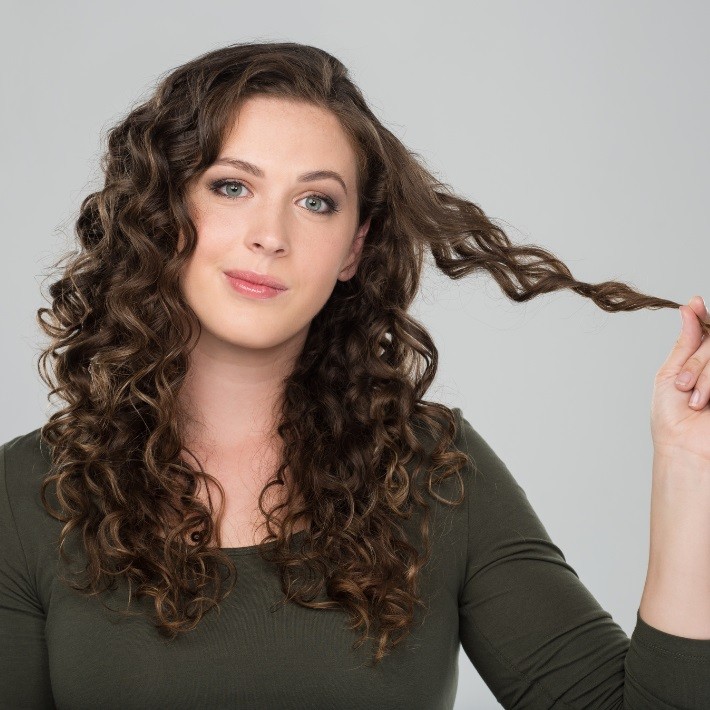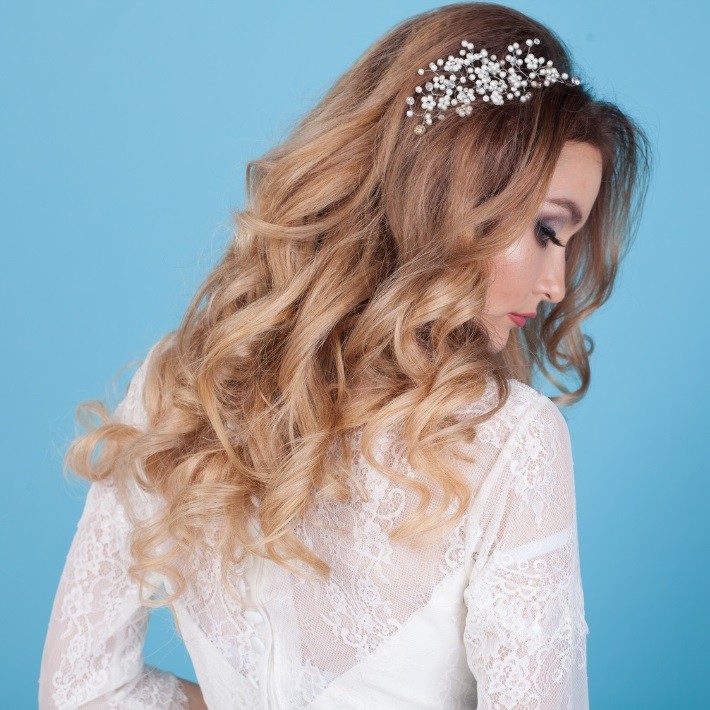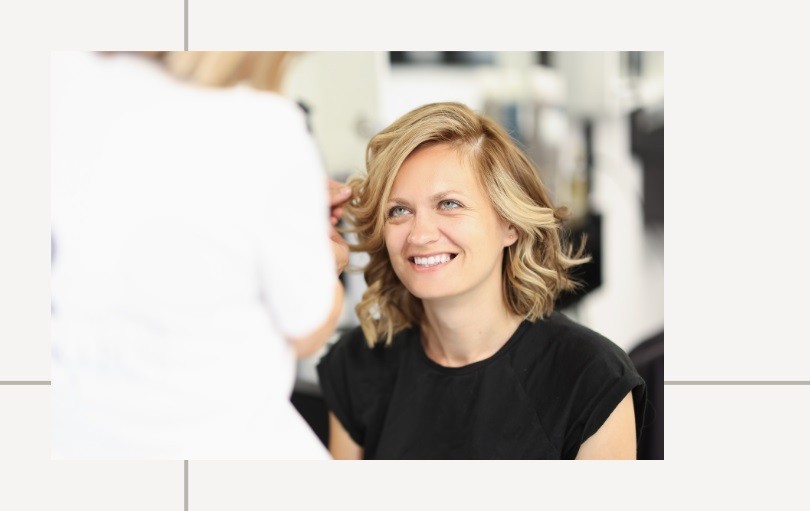Last Updated on March 28, 2025
Your hair curls at the ends due to natural wear and tear, heat damage, or genetics. Hair ends are older and more fragile, causing them to react differently to external factors and curl up.
Curly hair is a unique characteristic that many people desire, but others fight to straighten it out every day. As we all know, hair is a complex system, and many factors can affect how it curls, including genetics and environmental factors.
It may surprise you to learn that your hair’s curl pattern can be influenced by where it is on your head. Specifically, the ends of your hair are more susceptible to curling than the rest due to aging, heat damage, and exposure to the elements. Although curling can be an annoyance for some, it can also be a sign of healthy hair and an exciting way to switch up your look.
The Anatomy Of Hair And How Curling Works

Hair plays an essential role in shaping our overall appearance and curling is one of the most popular ways we can style it. Have you ever wondered why your hair curls at the ends? Let’s take a closer look at the anatomy of hair and how curling works to understand what makes it happen.
Related: Why Does My Hair Flick Out At The Ends?
What Makes Hair Curly Or Straight?
The shape of hair follicles determines whether the hair is straight, wavy, or curly. Hair follicles that produce straight hair grow straight up and out, while follicles that produce wavy or curly hair have a more twisted or curved shape. Genetics plays a significant role in determining follicle shape, but other factors, such as ethnicity, hormones, and age, can also influence it.
The Role Of Hair Follicles In Determining Hair Shape
The shape of the hair follicle is the primary factor in determining whether the hair is straight or curly. Follicles that are more elliptical produce curly hair, while follicles that are more circular produce straight hair. Additionally, the angle of hair growth and the number of follicles per square inch of the scalp can also affect hair shape.
How The Hair Cuticle Affects Curling
The hair cuticle, the outer layer of hair, plays a vital role in curling. When you curl your hair, you’re essentially changing the shape of the hair cuticle. Applying heat to the cuticle causes the hydrogen bonds between the keratin proteins in the hair to break, allowing them to change shape.
As the hair cools, new hydrogen bonds form, locking the hair into place in its new shape.
The Difference Between Permanent And Temporary Curling
There are two main types of hair curling: permanent and temporary. Permanent curling involves using chemicals to break and reform the hair’s internal bonds, creating a permanent curl. Temporary curling, on the other hand, involves using heat, such as a curling iron or hair rollers, to reshape the hair cuticle for a temporary curl.
While permanent curling typically lasts longer, it can also cause more damage to the hair than temporary curling.
The shape of our hair follicles largely determines the shape of our hair, including whether it’s curly or straight. The hair cuticle plays a crucial role in changing the shape of the hair when curling, and there are both permanent and temporary ways to achieve a curly hairstyle.
Factors That Influence The Curls At The Ends Of Your Hair

Have you ever wondered why the ends of your hair curl even when the rest remains straight? This phenomenon can be attributed to several factors, such as genetics, environment, heat, and humidity. We’ll explore these factors in more detail to help you understand what’s causing those curls at the ends of your hair.
Related: How To Use Rosemary Water For Hair?
Genetic Factors Affecting Hair Curliness
Hair curliness is predominantly determined by genetics, specifically the shape of the hair follicle. The shape can be straight, wavy, curly, or coiled, and it’s inherited from our parents. People with curly hair typically have elliptical hair follicles, whereas those with straight hair have round follicles.
However, genetics isn’t the only factor influencing hair curliness.
The Impact Of The Environment
Several environmental factors can affect hair curliness, such as exposure to the sun, wind, and pollution. These factors may cause structural damage to your hair, making it more prone to curling at the ends. Additionally, your hair is typically drier in colder climates, which can increase the likeliness of curls.
How Heat Affects The Curls At The Ends
Heat can significantly impact the curliness of your hair. When you apply heat using a straightener or curling iron, you change the shape of your hair, and it tends to curl under or over at the ends. Moreover, frequent use of hot styling tools can damage your hair, causing the curls to become more defined at the ends.
How Humidity Affects Curls
Humidity can be another factor contributing to the curls at the ends of your hair. Moisture in the air can penetrate hair fibers, making the hair strands expand. This action causes the curls to become more defined at the ends.
Conversely, low humidity may cause your hair to become frizzy, which can contribute to the curling effect at the ends.
Factors such as genetics, environment, heat, and humidity can contribute to why your hair curls at the ends. Understanding these factors can help you manage your hair better and maintain a healthy head of hair.
Related: Can Long Hair Cause Headaches?
Frequently Asked Questions
Is Curling At The Ends Of Hair Normal?
Yes, curling at the ends of hair is normal and can be caused by genetics, hair care habits, and environmental factors.
How Can I Prevent Curling At The Ends?
You can prevent curling at the ends of your hair by using a moisturizing shampoo and conditioner, avoiding heat styling tools, and trimming your hair regularly.
Can Certain Hair Products Cause Curling At The Ends?
Yes, certain hair products that contain harsh chemicals can cause dryness and breakage, leading to curling at the ends.
Can Curling At The Ends Be A Sign Of Damage?
Yes, curling at the ends of the hair can be a sign of damage from heat styling, chemical treatments, or lack of proper hair care. Trim your hair regularly to prevent damage.
Conclusion
As we conclude the discussion of why hair curls at the ends, we have learned that genetics, heat styling, and chemicals are the three culprits behind this phenomenon. While it is frustrating for some people to manage, hair experts suggest opting for hair trimming, avoiding excessive heat styling, and using natural hair care products to keep hair healthy and happy.
Embracing the natural texture of hair can be a perfect solution to enhance the beauty of curls at the ends. As we say goodbye to this topic, learning about our hair and how to take good care of it is essential to achieve healthy and glossy hair, free from frizz and split ends.
Keep exploring and experimenting with different styling techniques and products until you find what works best for your hair type. Remember, it’s all about loving and embracing the uniqueness of our hair, curls and all!

